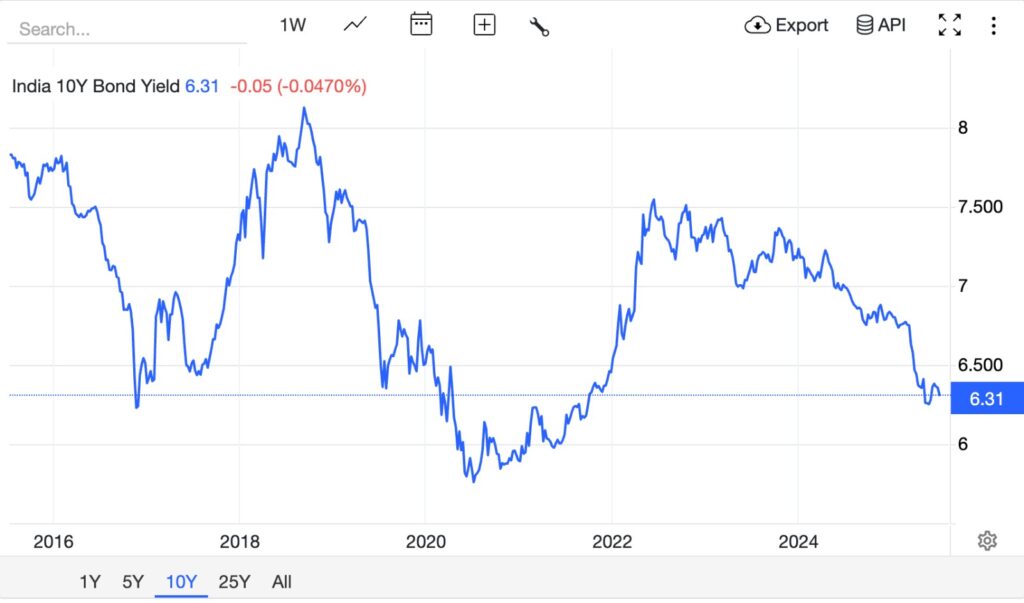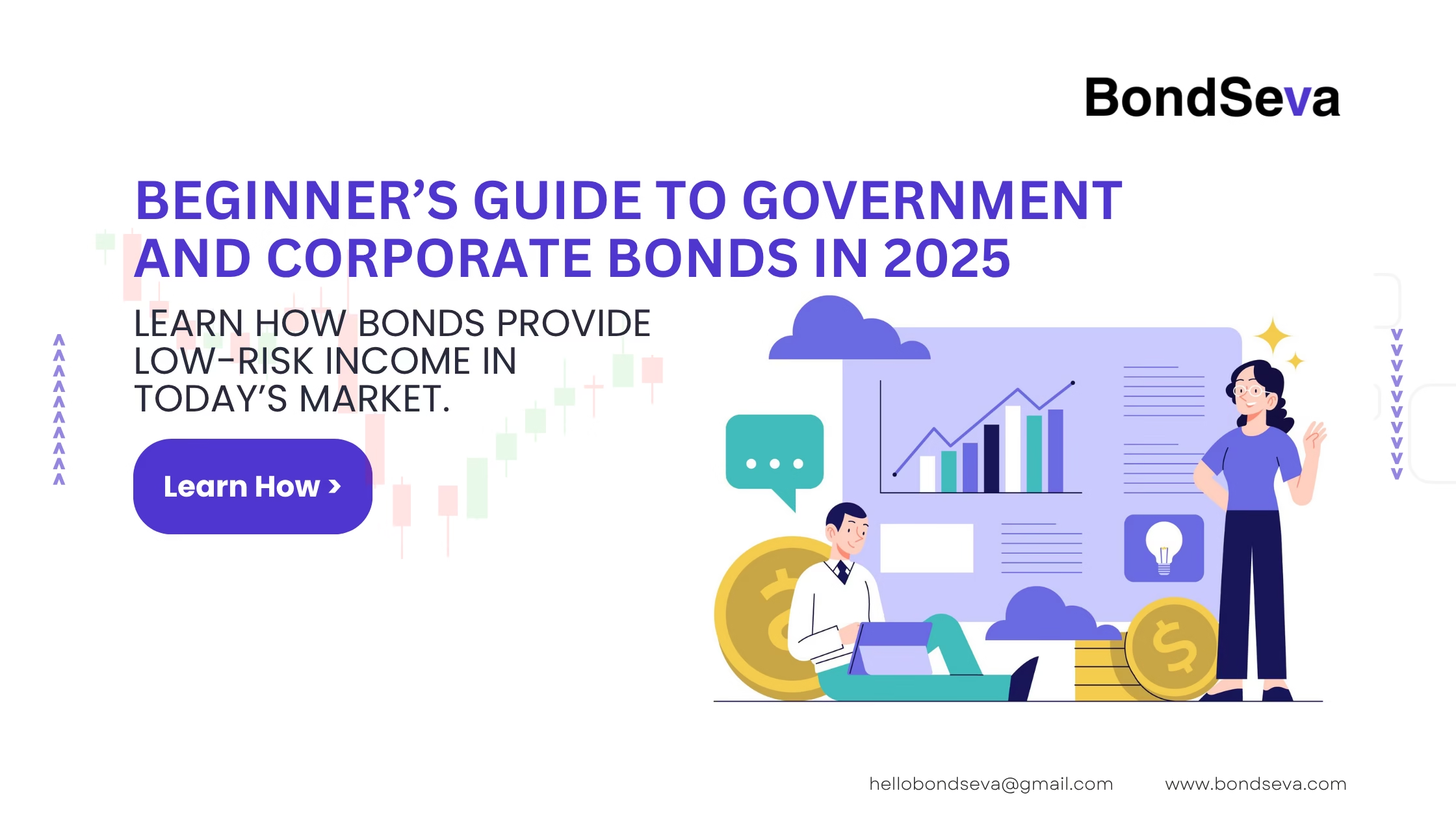Looking for a low-risk investment with stable returns? Investment options might be your answer. In this beginner-friendly guide for Bonds, we’ll explain everything from what an investment is, how it works, and why it could be a smart move for your portfolio in 2025.
Understanding the nature of investments is crucial for informed decision-making.
What is an Investment Bond?
An investment is a fixed-income option. When you buy an investment, you’re lending money to a government or a company for a certain time at a set interest rate. The duration and interest are fixed when you invest.
Governments and companies use investments to raise capital, either for operating their existing operations or funding new projects. In return, they pay you regular interest on the amount you’ve invested.
One thing to note is that investment prices and interest rates tend to move in opposite directions.
For example, when interest rates rise, investment prices typically fall, and when interest rates fall, prices tend to increase.
Some investments offer fixed interest throughout, while others have variable interest that can change over time.
What is an Indenture?
An indenture is a mutual agreement between the issuer of the bond and the bondholder. It outlines all the key details and terms of the bond, such as the interest rate, maturity date, payment schedule, and other important conditions.
1. Face Value
The benefit lies in the interest (coupon) payments, which are calculated based on this face value.
2. Coupon Rate
The coupon rate is the interest rate the bond issuer pays to you (the bondholder) annually, based on the bond’s face value.
Typically paid semi-annually every 6 months, though some bonds may pay annually or quarterly.
Example:
An 8% coupon on a $1,000 bond = $80 annually
Paid as $40 every 6 months (if semi-annual payments).
3. Coupon Dates
These are the specific dates when you receive the interest (coupon) payments from the issuer.
Common schedule: Every 6 months – say, January 1st and July 1st.
4. Maturity Date
This is the end date of the bond — the day when the bond issuer pays you back the face value.
Example:
If a bond matures on Dec 31, 2030, you’ll get back your original investment (face value) on that date.
5. Issue Price
The issue price is the price at which the bond is initially sold to investors.
It can be:
- At par (same as face value, e.g., $1,000)
- At a premium (more than face value)
- At a discount (less than face value)
Why Buy Bonds?
When individuals think about investing, they usually prefer stocks or fixed deposits. While stock market investments can offer good potential returns, they are also more prone to market volatility. For beginners, the stock market can be risky — picking the right stock isn’t as easy as investing in a fixed deposit or a bond. You need to do a lot of research before buying any stock.
On the other hand, fixed deposits are easy to understand and considered one of the safest investment options. But the problem is, FD returns often fail to beat inflation after taxes.
That’s where bonds strike the perfect balance. They offer inflation-beating, predictable returns — typically around 8% to 15% — with relatively low risk.
Offers Predictable & Stable Income Stream
Debt instruments are generally considered safe haven investments compared to equity.
Though their returns are lower than equity, they are predictable and stable.
For example, before investing in a bond, investors already know the monthly interest or YTM (Yield to Maturity) they will receive.
Also, government bonds have a low risk of default and have given consistent returns over the last 10 years

Tax-Free Interest Rates
Government-backed entities like NHAI, etc., issue tax-free bonds. These bonds usually have a maturity period ranging from 5 to 50 years, and the interest earned on them is tax-exempt under Section 10(15) of the Income Tax Act.
Holding Bonds vs Trading Bonds
If you buy a bond, you can collect the interest payments until maturity, and after maturity, you will receive the face value of the bond.
However, you can also buy or sell bonds in the secondary market. After a bond is issued, its value fluctuates, just like a stock.
If you’re holding the bond till maturity, you don’t need to worry about market fluctuations. Your interest payments and the face value remain unaffected.
But if you want to sell your bond or buy one before its maturity, you can trade it in the secondary market.
Types of Investment Bonds (India & Global)
There are several types of bonds available in the market, depending on who issues them and for what purpose. Here’s a simple breakdown of the major categories you’ll come across, including options available in India:
1. Corporate Bonds
These are issued by private or public companies to raise funds for business expansion, working capital, or new projects. In return, the company pays you interest at regular intervals. While corporate bonds often offer higher returns than government bonds, they also carry slightly more risk depending on the company’s financial health.
In India, companies like Tata Capital, L&T, and Reliance have issued bonds that are available to retail investors.
2. Government Bonds (India: G-Secs)
Government bonds, also known as G-Secs in India, are issued by the central or state government to fund infrastructure development, public welfare schemes, or manage fiscal deficits.
These are considered extremely safe, as they are backed by the government itself. Interest is paid semi-annually, and maturity periods can range from 1 year to as long as 40 years. You can buy them via platforms like RBI Retail Direct, NSE, or through banks during bond issues.
3. Municipal Bonds
These are issued by local government bodies such as city corporations or municipalities to fund specific public projects like roads, sewage systems, or water treatment plants.
While relatively new in India, cities like Pune and Ahmedabad have successfully issued municipal bonds. They come with tax benefits in some cases and are usually regulated by SEBI.
4. PSU Bonds / Tax-Free Bonds (India-specific)
Public Sector Undertaking (PSU) bonds are issued by government-owned entities like NHAI, REC, IRFC, and HUDCO. Many of these are tax-free bonds, meaning the interest you earn is exempt from income tax under Section 10(15) of the Income Tax Act.
These are popular among senior citizens and conservative investors looking for steady, tax-efficient returns with high safety.
5. Agency Bonds (More common in the US)
Agency bonds are issued by government-affiliated organisations, mostly seen in the United States. Examples include Fannie Mae and Freddie Mac, which support housing finance. These bonds are generally safe but may not carry a full government guarantee.
Limitations of Bonds
Even though bonds are a low-risk investment option, they come with certain limitations.
- Lower Return: Bonds usually give lower returns compared to equity. While the risk is low in bonds, the potential returns in equity are much higher.
- Inflation Risk: Inflation is one of the major risks in bond investing. Since bonds provide fixed income, there’s a risk of devaluation over time if inflation rises.
- Limited Liquidity: Bonds have limited liquidity. You can’t always buy or sell a bond whenever you want.
Where Can You Buy Bonds?
There are multiple ways to buy bonds in both the primary and secondary markets. Here’s how:
1. Primary Market
When a bond is first issued, you can buy it directly from the issuer.
Example:
In India, when the government issues bonds, you can purchase them through RBI Retail Direct, banks, or during government bond auctions.
In the USA, Treasury bonds can be bought from treasurydirect.gov.
2. Secondary Market
Once bonds are issued, they can be traded like stocks in the secondary market. You can buy and sell them on exchanges such as NSE or BSE in India, or NYSE in the US.
3. Banks and Financial Institutions
Some banks offer bonds like tax-free bonds or floating rate bonds.
You can buy these over the counter at branches or online through your net banking account.
4. Brokers and Trading Apps
Many brokers and mobile apps (like Zerodha, Groww, Upstox in India) allow you to invest in bonds with a few clicks. These platforms show ratings, interest rates, maturity dates, and help you compare options easily.
Are bonds better than fixed deposits in India?
Bonds can give you higher post-tax returns compared to fixed deposits, especially tax-free or government bonds. However, FDs are more liquid and familiar to Indian investors. Choosing between them depends on your risk appetite and financial goals.
Can I lose money in bonds?
If you hold a bond till maturity, the chances of losing money are low, especially with government or AAA-rated corporate bonds. However, if you sell a bond before maturity in the secondary market, its price can fluctuate due to changes in interest rates or credit ratings.
What is the minimum investment required to buy bonds in India?
It varies based on the issuer. Government bonds via RBI Retail Direct usually start from ₹1,000. For corporate bonds, the minimum can range from ₹10,000 to ₹1 lakh, depending on the offering.
If you find any factual errors or have suggestions, feel free to contact us — we’re happy to improve and make investing simple for everyone!
